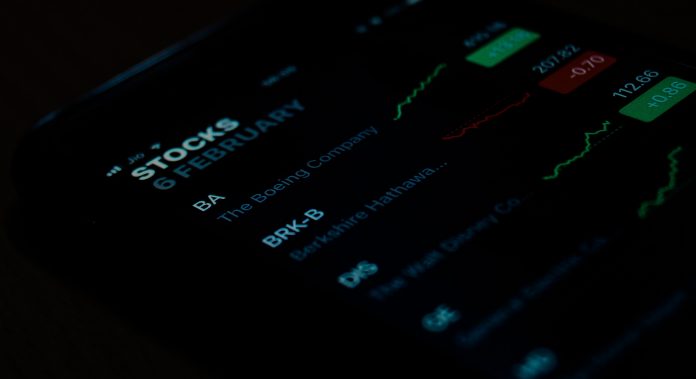So what is an ETF? ETF stands for Exchange Traded Funds. You’ll know all there is to them after reading this post. So let’s get started.
What is it? How does it work
An ETF is like an Index Fund. They are created to track different stocks or sectors such as oil and technology. They let you invest in a variety of things, instead of one area. An example of this would be there could be a mashup up of real- estate, stocks, and bonds. It’s like a mutual fund, but cheaper.
Unlike an Index Fund, ETFs are listed. You buy an ETF like a stock. It has its own ticker. So you can watch it go up and down if you like. It acts like an Index or Mutual Fund, but you can actually trade it. If you like day trading, you are able to do so here.
ETF Benefits
- Diversification- Instead of owning stock in one company, you own stocks of different types. It lowers your risk of losing money, since it’s various companies instead of one.
- Transparency- Like a stock, their holdings publish at the end of each day. You can keep an eye on the price throughout the day.
- Convenience- Once you buy it, you own it immediately. Since the price changes throughout the day, you can trade it at any time. Super easy and quick to do.
- Strategy- Since it operates like a stock, you can do many things to plan a strategy. You can buy on margin. You can day trade. You can set different types of orders (stop loss, market, and limit) so you can make or not lose money.
- Charges- The expense ratio is lower than mutual funds.
- No Minimum Investment- The only money you need is the money it costs to buy the ETF. So whatever it cost at the time of the buy is all you need.
The Drawbacks
- Costs – Depending on your brokerage firm, there is a charge for buying and selling. If you are buying and selling a few, these costs can stack up over time. Make sure to check the cost, before making any transaction.
- Liquidity – Like regular stocks, the market bases its value on supply and demand. Some ETFs are harder to sell due to them being less sought after because of the price. So only invest in the major ones to solve this problem.
- Activity – If you are trying to time the market, you may take a loss. The average is 90% failure for most money managers. Don’t forget about the charges and taxes that you will rack up.
Where to Buy/Sell
There are many ways of doing this. It depends on how you want to go about doing this. My suggestion is a brokerage firm.
Brokerage firms are easy to sign up for. Fidelity, Vanguard, and Ameritrade are the first ones that come to mind. They also offer their own ETFs, which means no commission charge.
Go to their webpage. Create an account. Verify your identity. Deposit a minimal amount of cash. Then after a few days you will be verified and you can buy and sell away.
The other way of doing this is if you have 401k or an IRA. Retirement financial plans do not offer a bunch of them. You’ll be able to find a few. You may need to ask whoever your accounts are through about this.
Different Types of ETFs
We have discussed what an ETF is. We have discussed where to buy and sell them. There are thousands of them. Here are some different types of categories to help make your choice easier.
- Broad Market ETF- Broad Market ETFs are exactly what you would imagine. They track the indexes of the Dow Jones, Nasdaq, and the S&P. These are cheaper. You’ll also get the best return out of these. The main thing is they do not have a lot of movement. It’s a long term game.
- Industry-specific ETF- These are for specific sectors. So it narrows the field of choices by a bit. An example of this would be in Airlines. You’d have various stocks in that general ETF. The bonus is that having these stocks spread out, you do not have to worry about taking a hit, if one of them tanks.
- Dividend ETF- People love these. The reason for this is there is consistent income. An example would be the Dow Jones US Select Dividend Index. The downside to these is they are pricey. You’d be better off buying and selling regular stocks.
- Bond ETF- These are a perfect addition to any portfolio. These lower the risk of your portfolio. When stocks are down, these are up!
- Commodity ETF- These simplify the process to invest in precious ores and other commodities. Examples are gold, silver, all the way to natural gas. Otherwise, it’s kind of a difficult process. iShares Silver Trust and The SPDR Gold Shares are a couple of examples of these ETFs.
- Currency ETF- This is the most unrecommended ETF. The only reason you would do this is if you are experienced in FOREX trading. You could either make a lot of money or lose it all. The swings are huge.
- Real Estate ETF- These are diversified ETFs. You are unable to invest in a specific type of real estate. Let’s say the housing market crashes. There are commercial properties included to keep you safe. These make it easier to feel safe about your investment.
So there you go. There are all the basics of ETFs. You now have the basic knowledge. You are ready to get out there and invest. I hope you enjoyed reading this. I hope you learned also. ‘Till next time!


























